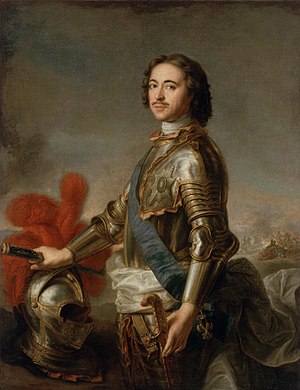Slavic Union
Slavic Union Славянский союз
Slavyanskiy Soyuz | |
|---|---|
| Motto: "Vozhd' nad Soyuzom, Soyuz prezhde vsego!" (Slovene) "The Vozhd above the Union, and the Union above all!" | |
| Anthem: "Privetstvuyu Vozhd' (Slovene)" Hail to the Vozhd | |
| Capital | Saint Petersburg |
| Largest city | Osipovgrad |
| Official languages | |
| Ethnic groups | |
| Religion | Orthodox Christianity |
| Demonym(s) | Slavic |
| Government | Unitary One Party Dictatorship |
• Vozhd | Maksim Borosov |
| Anton Vinogradov | |
| Matvei Pavlov | |
| Georgii Federoff | |
| Legislature | Duma |
| Establishment | |
| March 12 1813 | |
| October 18 1938 | |
| GDP (PPP) | 2020 estimate |
• Total | 333 billion |
| Currency | Ruble |
| Driving side | Right |
| Calling code | +327 |
The Slavic Union (Slavic: Славянский союз, Slavyanskiy Soyuz) also commonly known as simply The Union is a nation located [insert location] in the Coalition of Crown Albatross. [Other facts about location]
The nation's capital is located in Saint Petersburg, with other major cities in Osipovgrad, Moscow, and Zhukovgrad. The nations west is heavily populated, with the majority of the east's population living in small towns.
For centuries the Slavic Union was a series of small, constantly warring princedoms, until they were united into the Slavic Empire by Tsar Ivan I in the 18th century. Eventually in 1917 the Krasnyy attempted to overthrow the monarchy, starting the 12 year Slavic Civil War, which would eventually be won by the white army, and the Slavic Republic would be established. Eventually in 1938 the tsardom would be abolished by Nikifor Osipov, who would take complete control of the nation and establish the Slavic Union with himself as Vozhd.
While technically a democracy due to the Duma the Vozhd is a dictator with almost complete control over the Union, with the nation also being a one party state. The military has massive sway in the politics of the nation, with its interests often coming before the interests of the people.
The Slavic Union has often been criticized for its blatant human rights abuses, suppressing any criticism of its regime, and how much power the military has over it, essentially acting as another branch of the government.
History
Early History
The first settler of the modern day Slavic Union were the Rodnyye, who came here during Second Great Iearth Migration dated to approximately 50,000 years BP. The first settlers came form Zamastan and were primarily hunter gatherers. The mountains near the middle of the country meant that settlement of the east was sparse.
Early on the land that now makes up the Slavic Union was divided among small princedoms in a near constant state of warfare, over time as technology advanced Slavs were able to connect more with outside nations, the constant warring lead to many young boys being trained from birth to be a soldier, gaining Slavs a reputation for being good fighters, with many being hired as mercenaries.
The constant warfare kept the Slavic nations behind technologically and culturally, with the average lifespan being incredibly short and the Industrial Revolution passing them by. In 1802 Ivan I was crowned king of Moskva, and by 1813 he had brought all Slavic lands under his control, he was crowned Tsar of the Slavs by the Patriarch of the Orthodox church.
Slavic Empire
Despite the unification of Slavic lands the Empire remained behind other nations in the world, with old practices such as leaving newborns perceived as weak out to die being maintained for centuries before slowly dying out in the late 1800s. Slavery was abolished in 1822 but serfdom remained until 1877.


